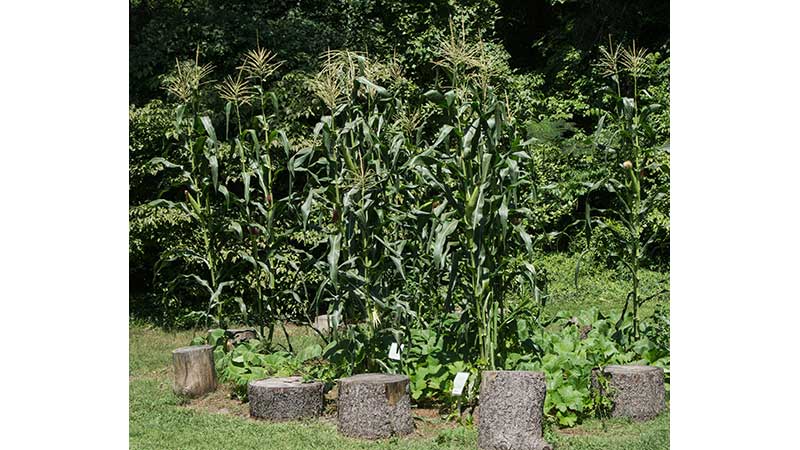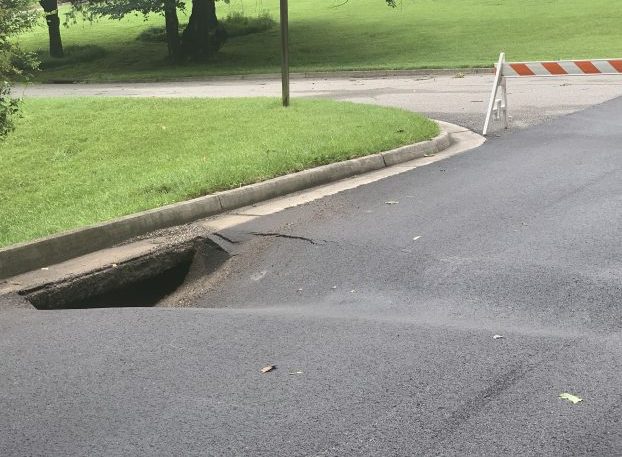Gardeners questions
Published 4:26 pm Thursday, September 26, 2019

- Corn plants with small, immature ears not yet ready for picking.
Over the years, I’ve gotten lots of questions about gardening. Most are the usual ones — when to plant potatoes, how to grow sweet potato sets, how deep to plant bulbs, where to plant hellebores. Routine, workaday questions about the mechanics of growing vegetables and ornamentals.
With the interest in native plants these days, there are also plenty of questions about which ones to include in the home garden. Most questions have simple, straightforward, textbook type answers, but once in a while someone asks a question that leaves me momentarily speechless.
While most of us here in rural Virginia more or less assume that everyone knows how to grow corn, that simply isn’t true. Several years ago, I received a series of texts from someone who was growing corn for the first time. The first question was easy enough: “How do I tell when my corn is ready to pick?” I explained about the tassels, pollination, and the color of corn silk. My response was probably far more academic than was necessary. I should have just said, “Go to the garden, select a nice fat ear of corn, and pull back the husks a bit so that you can see the kernels of corn.” I didn’t, and the text message dialog continued. Obviously, the person was checking the corn in the garden between texts. After several queries, I received a final plaintive question: “But, when does my corn turn yellow?” Ah, yes! Not all corn is yellow, and it doesn’t change color when it ripens. I assumed a level of knowledge that the gardener didn’t have.
Trending
And then there are tomatoes, another puzzling item in many vegetable gardens. For those of us who grew up with enormous vegetable gardens that included at least 20 of every variety of tomato imaginable, it’s all very simple. You grow a tomato plant from seed or buy a young plant and stick it in the ground. If you provide the right amount of water, light, and fertilizer, you generally get lots of tomatoes. Of course, this seemingly simple process assumes a large amount of knowledge about botany that some of us absorbed through osmosis from grandparents and parents. An acquaintance was recently asked why some lovely tomato plants weren’t bearing fruit, especially since the gardener had been religiously removing all flowers so that the plants could concentrate on bearing fruit. Indeed.
Trees also puzzle some gardeners. Especially young, expensive trees that the gardeners have pampered through a long, hot summer. When fall arrives and the leaves on these trees begin to turn brown and drop, there is panic and the assumption that the trees are about to die. Of course, they’re just doing what deciduous trees are supposed to do in the fall. There’s no need to panic.
In the native plant world, confusion reigns when people insist on using common names and then relate those names to similar ones in the domestic plant world. One person whom I met recently had a photo of a very tall weedy looking plant that was growing in her perennial border. She had been told by several people that it was wild blue lettuce (Lactuca floridana), but insisted that this identification couldn’t possibly be correct: “Everyone knows that lettuce is a short, tender plant perfect for including in a salad.” Convincing her that the weed in her flower bed was, indeed, wild lettuce was impossible. She finally announced that she had Googled photos of a similar plant and that it was a giant dandelion. Sometimes you can’t convince a person of something that they don’t want to believe. The idea of a tall, spiny plant being called lettuce was just too far from this person’s frame of reference. She refused to believe it.
There really aren’t any dumb gardening questions. We all have holes in our knowledge set, and asking questions is an excellent way to learn. Nevertheless, I’m still smiling every time I think about corn needing to change color in order to be ripe. And there’s someone out there who’s chuckling about some “dumb” questions I’ve asked about growing orchids or another plant. Here’s to lots of questions and the fortitude to answer them patiently.
CYNTHIA WOOD is a master gardener who writes two columns for the The Herald. She can be reached at cynthia.crewe23930@gmail.com.





